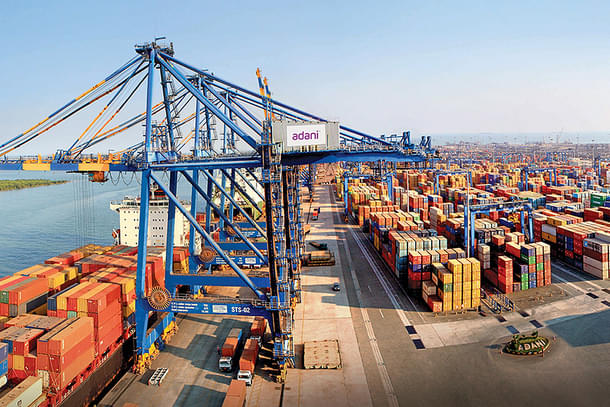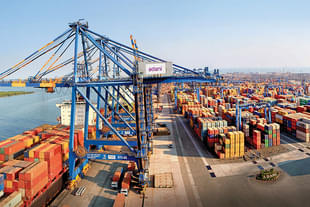News Brief
More Private Investment Expected In Indian Ports As Shipping Ministry Sets Target Of 80 Per Cent Landlord Model By 2030
Nishtha Anushree
May 19, 2024, 01:33 PM | Updated 01:33 PM IST
Save & read from anywhere!
Bookmark stories for easy access on any device or the Swarajya app.


The secretary of the Ports, Shipping and Waterways Ministry, T K Ramachandran emphasised the need for a Public-Private Partnership (PPP) model for managing operations at Indian ports.
While speaking at the Confederation of Indian Industry (CII) Annual Business Summit 2024, Ramachandran said, "We want to shift to an 80 per cent landlord model by the end of this decade (2030)."
In a landlord model, operations are run by private players while the port authority acts as regulator and landlord. It is known for increasing efficiency and reducing logistics costs.
Ramachandran highlighted that Jawaharlal Nehru Port (JNPT) has become the first major port in the country that is based on a 100 per cent landlord model as all berths are operated on the PPP model.
The PPP model allows private investments in the port sector. It is one of the four pillars of the Shipping Ministry. The other three are port-based industrial clusters, investments in the maritime sector and multi-modality.
Ramchandran highlighted India's achievement of 111 waterways from five national waterways 10 years ago and pointed structural reforms brought in to make the port sector friendly for private players.
"We have reformed the Major Ports Act, the Inland Vessels Act. We have made changes in the model concession agreements (MCAs)," he said pointing towards India's huge capacity with 12 major ports.
Nishtha Anushree is Senior Sub-editor at Swarajya. She tweets at @nishthaanushree.





